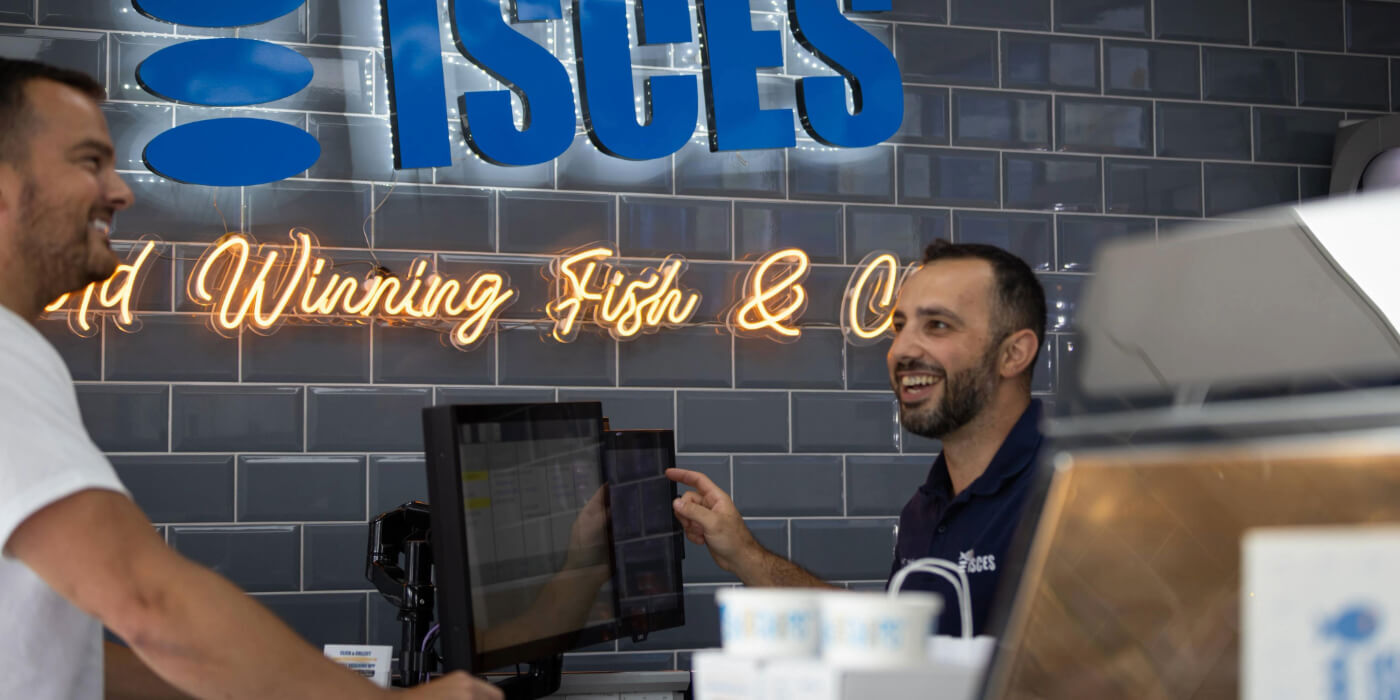How Fish & Chip Shops Can Use EPOS Data to Drive Profit & Repeat Business
Posted by Cos Michael on 18th Jun 2025 Reading Time:
Welcome to this edition of Trade Talks, where we bring you insights straight from the fryers of the fish and chip industry. In this column, Cos Michael, Owner of Pisces in Heswall, shares his perspective on the trade.
In today’s highly competitive food landscape, running a successful fish and chip takeaway is about more than frying the perfect cod or serving piping hot chips. Behind the scenes, some of the most successful chippies are leveraging a powerful, often underused asset: EPOS sales data.
EPOS (Electronic Point of Sale) systems do far more than print receipts — they generate rich, real-time sales data that, when understood and used correctly, becomes a goldmine for smart, strategic growth. In short, if you’re not analysing your data, you’re leaving money on the table.
Why EPOS Sales Data Matters
Every order that goes through your till tells a story — what your customers like, when they like it, how often they return, and what makes them spend more. Over time, this builds what we call your CRAM database — short for Customer Relationship Analytics Management.
Think of CRAM as a more focused, practical offshoot of a CRM (Customer Relationship Management) system — but grounded in the real data your EPOS collects daily. Rather than just storing contact details or generic profiles, CRAM is all about analysing customer behaviour, preferences, and trends that help you make smarter decisions.
Your CRAM database becomes a consolidated resource of:
- Customer habits
- Regular orders
- Average spend per visit
- Menu preferences
- Sales peaks and dips
- Product performance
This isn’t just data — it’s your blueprint for keeping regulars happy, bringing lapsed customers back, and turning casual passers-by into loyal fans.
Regaining & Retaining Repeat Business
Repeat customers are the lifeblood of any local chippy. By tracking buying habits, you can:
- Send targeted offers (“Haven’t seen you in a while – your cod & curry sauce is waiting!”)
- Introduce loyalty schemes based on actual frequency
- Highlight trending combos or upsells (e.g. “80% of Friday customers order two fish, one chip and two peas — let’s push this!”)
- Tailor campaigns by day or season (like offering family meals at teatime or lunchtime deals for workers)
Innovation Through Insight
Think of your CRAM database as your secret marketing weapon. It helps you answer:
- Should you launch a lunchtime box deal?
- Are gluten-free sales worth expanding?
- Which side orders aren’t moving — and need reinvention or removal?
- What’s driving those midweek dips?
Without this, your decisions are guesswork.
With it, you’re making moves based on real customer behaviour — not assumptions.
Real Example: “Quiet Tuesdays”
Say your data shows Tuesdays are consistently quiet. Instead of chucking out a generic “10% off” poster, you dive into your CRAM insights and realise:
- Most orders that day come from young families
- Average spend is lower than on Fridays
- Add-on sales (like gravy, curry, or desserts) are minimal
Armed with that, you launch a “Family Tea Tuesdays” promo — bundled meals with a free kids’ dessert — sent directly to that customer segment. The result? You turn a quiet slot into a consistent win.
And If You’re Not Using It?
If you’re a fish and chip shop owner not making use of your EPOS sales data:
- You’re guessing where others are precision-targeting
- You’re reacting where others are predicting
- You’re hoping customers return while others are nudging them back
In today’s market, that’s the difference between stagnation and growth.
Getting Started
If you already have an EPOS system, you’re halfway there. Make sure it’s collecting and categorising data in a way you can use. Then start building your CRAM database:
- Categorise your sales (by day, time, item, upsell)
- Create customer profiles (based on order history)
- Spot patterns and trends
- Use those patterns to fuel real-world campaigns
No EPOS yet? Then you’re not just missing tech — you’re missing insight, strategy, and sales.
Final Word
The art of running a thriving fish and chip shop today lies in blending tradition with innovation. Great food will get customers through the door — but a data-driven strategy will keep them coming back.
Whether you’re a fan of McDonald’s or not, one thing is clear: they’ve mastered the digital game. That’s one reason the younger generation often chooses them over local options. It’s not just about the food — it’s about familiarity, convenience, and innovative use of data.
Becoming digital isn’t just the new way — it’s the future.
Next up, we’ll explore how digital signage can generate revenue in ways you might never have considered.
So, crunch your numbers. Build your CRAM. Let your data drive your decisions.
Because in a world full of choices, the smartest chippies don’t just serve their customers — they understand them.





